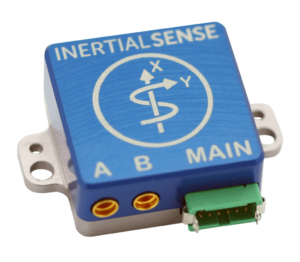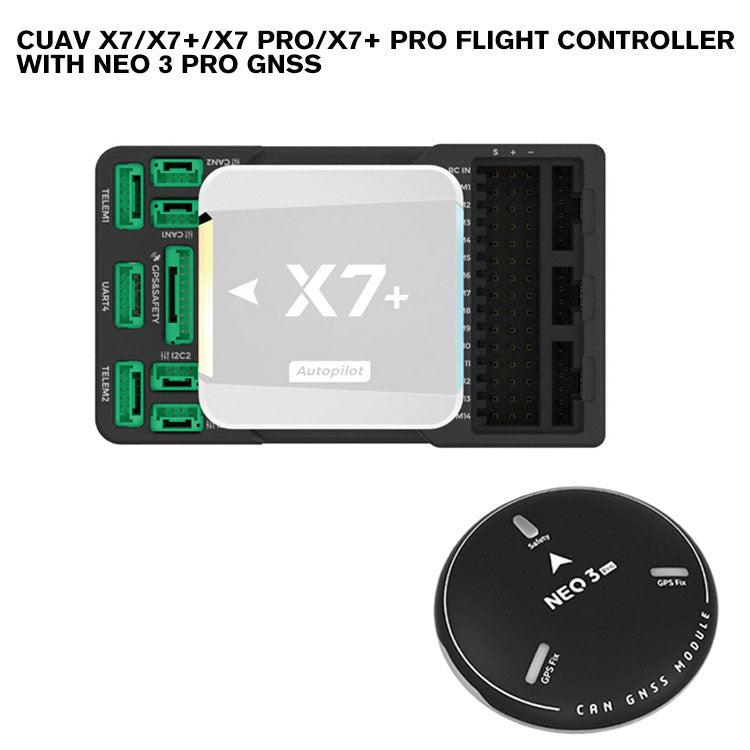SparkNavi Drone Flight Controller and GNSS/INS Made in Taiwan: Cutting-Edge Solutions for UAVs
The Importance of Drone Trip Controllers in Modern Aerial Innovation: Trick Parts and Their Influence
In the realm of modern airborne modern technology, drone trip controllers serve as the pivotal systems that orchestrate a drone's efficiency and capacities. As industries significantly rely on drones for applications ranging from agriculture to monitoring, the developing modern technology within flight controllers raises vital concerns regarding their future influence and possible developments.

Introduction of Drone Flight Controllers
In the realm of aerial modern technology, drone trip controllers serve as the crucial mind of unmanned airborne lorries (UAVs), allowing precise maneuverability and security during flight. These advanced systems incorporate sensing unit data, processing formulas, and control inputs, allowing drones to implement complex trip patterns with precision.
Drone flight controllers utilize various sensors, such as gyroscopes, accelerometers, and GPS modules, to assess the UAV's orientation and position in real-time. This info is necessary for preserving equilibrium and making sure safe procedure in varied ecological problems. The controllers procedure this information to make instant adjustments to the drone's motors, enabling smooth changes and responsive handling.
Moreover, trip controllers are geared up with sophisticated software that supports functions such as waypoint navigating, obstacle avoidance, and autonomous flight capabilities. This software application is vital for both entertainment and industrial applications, where integrity and accuracy are critical. As drone innovation continues to advancement, the advancement of trip controllers will certainly play a crucial duty in improving UAV safety and security, capability, and versatility, ultimately increasing their applications throughout different industries.
Trick Elements Explained
Recognizing the essential components of drone trip controllers is important for comprehending how these systems run efficiently. At the heart of a trip controller is the microcontroller, which offers as the mind, refining information from different sensing units and executing commands. Important sensors include accelerometers and gyroscopes, which measure the drone's positioning and motion, supplying essential feedback for stabilization.
Another secret component is the barometer, which determines elevation by determining air pressure, while general practitioner components use positional data, enabling autonomous navigating - SparkNavi drone flight controller and GNSS/INS made in taiwan. The flight controller likewise interfaces with Digital Rate Controllers (ESCs), which regulate the speed of the drone's motors based upon the controller's commands
Interaction modules, such as radio receivers, facilitate remote input, allowing drivers to send commands in real-time. Additionally, some flight controllers integrate software program that can take care of complicated algorithms for waypoint navigation, trip planning, and telemetry data evaluation.
Role in Trip Stability
Central to preserving trip stability, drone flight controllers use sophisticated formulas to process sensing unit data and make real-time modifications. These controllers are equipped with a range of sensing units, including measures, gyroscopes, and accelerometers, which constantly check the drone's speed, alignment, and altitude. By interpreting this data, the flight controller can determine deviations from the desired flight course and respond quickly to keep stability.
As an example, if a drone experiences an unanticipated gust of wind, the flight controller can quickly adjust the motor speeds to counteract the disruption, guaranteeing a steady flight trajectory. This capability is critical not just for hand-operated trip procedures but likewise for executing intricate maneuvers and maintaining smooth trip in various ecological problems.
.jpg)
Furthermore, the sophisticated formulas used in flight controllers, such as PID (Proportional-Integral-Derivative) control, enable fine-tuning of the drone's action to changes in trip problems. By optimizing these control criteria, flight controllers can enhance security, improve responsiveness, and lower pilot workload. Ultimately, the role of flight controllers in making sure trip security is vital for the secure and reliable procedure of modern-day drones throughout diverse applications.
Impact on Autonomous Operations

Autonomous procedures are particularly essential in varied applications such as security, distribution, and farming services. With improved trip controllers, drones can autonomously navigate Recommended Site established courses, efficiently collect information, and adjust to dynamic environments. This capability decreases the requirement for constant human oversight, thus raising operational efficiency and safety.
Furthermore, the implementation of maker understanding methods within flight controllers makes it possible for drones to enhance their efficiency in time by gaining from previous missions. This adaptability leads the way for more advanced autonomous applications, such as swarm modern technology, where numerous drones coordinate their actions to achieve a typical goal.
Future Trends in Flight Controllers
Innovations in flight controller technology are poised to transform drone abilities in the coming years. One significant trend is the assimilation of fabricated intelligence (AI) and device discovering algorithms, allowing drones to gain from their atmospheres and make real-time decisions. This development will enhance self-governing navigating, obstacle avoidance, and goal preparation, dramatically enhancing operational performance and safety.
Furthermore, the growth of innovative sensor modern technologies, such as LiDAR and multispectral imaging, will give flight controllers with richer information inputs. This will help with a lot more innovative logical capacities, permitting drones to perform intricate jobs, such as precision search, agriculture and rescue, and infrastructure inspections with extraordinary accuracy.
Another arising trend is the miniaturization of trip controller elements, which will certainly lead to lighter and a lot more portable drones. This development will certainly expand flight periods and payload abilities, making drones extra versatile for different applications.
Verdict
In verdict, drone flight controllers work as important elements in contemporary aerial modern technology, making certain stability and accuracy in ability to move with the assimilation of microcontrollers, accelerometers, and GPS components. SparkNavi drone flight controller and GNSS/INS made in taiwan. Their capacity to enable self-governing operations and adjust to different applications underscores their relevance throughout several industries. As improvements in synthetic intelligence and sensor modern technology remain to emerge, the potential for enhanced capacities and enhanced operational performance in drone systems will likely improve the future of aerial applications
Central to maintaining trip security, drone flight controllers make use of sophisticated algorithms to refine sensor information and make real-time modifications. By analyzing this information, the flight controller can recognize variances from the desired trip path and respond quickly to maintain stability.
Additionally, the innovative algorithms utilized in trip controllers, such as PID (Proportional-Integral-Derivative) control, permit for fine-tuning of the drone's response to changes in trip problems. Eventually, the duty of flight controllers helpful hints in making certain flight stability is crucial for the reliable and secure procedure of modern-day drones across diverse applications.
The innovations in drone trip controllers not only enhance trip security however additionally considerably affect autonomous procedures. SparkNavi drone flight controller and GNSS/INS made in taiwan.